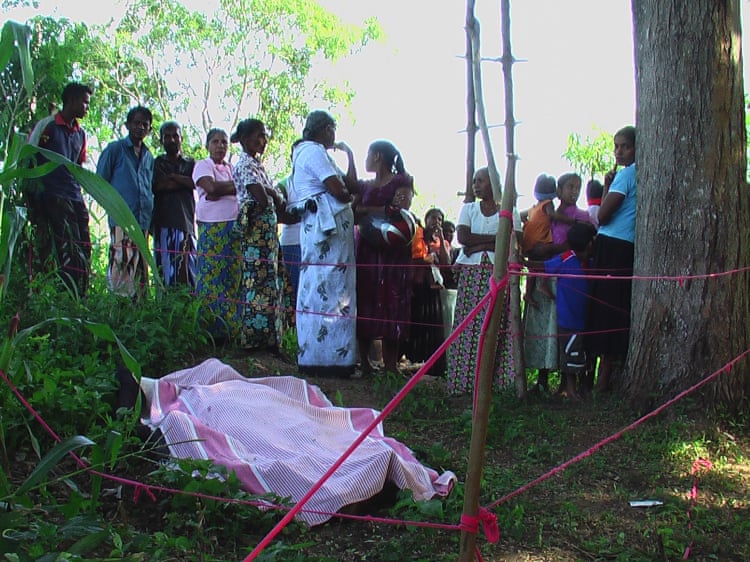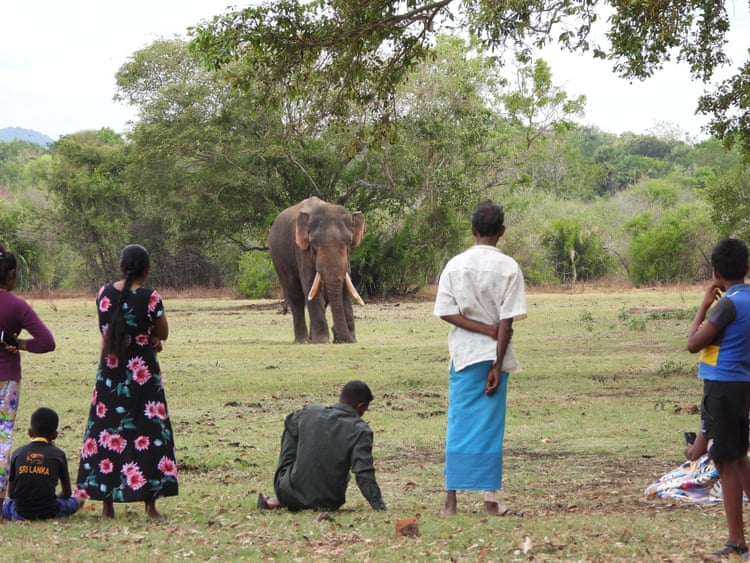Setting out from home to collect firewood on a cool spring morning last year, Harshini Wanninayake and her mother had no idea only one of them would come back alive. The pair were walking to a nearby forest from Eriyawa, a village in north-west Sri Lanka, when they heard a loud rustling close by.
“It came out of nowhere,” says Wanninayake. “The elephant was behind the thicket and took us completely by surprise.”
The elephant lunged towards Wanninayake’s elderly mother, who tried to scramble out of the way but was knocked over. “It ran off, trampling her in the process,” says Wanninayake, who ran screaming to get help. When she returned with her brothers, it was too late – their mother was already dead and the elephant was gone.
“We found her still body on the ground, battered and bruised. All her bones were broken,” says Wanninayake, who is still shaken by the attack.
In Sri Lanka, the delicate balance of human-elephant coexistence is facing unprecedented threats. Last year, 176 people died in elephant encounters on the island, and 470 elephants were killed – more than double the number of elephant deaths in 2010.
14 or so Sri Lankans stand under a tree with a corpse under a cloth in the foreground
View image in fullscreen

The rising death toll over the past four years has made Sri Lanka the worst country for human-elephant conflict in the world.
Habitat loss, deforestation, competition for land and shrinking resources have fuelled tensions. In 1997, Sri Lanka’s forests were estimated by the UN to cover nearly 20,000 sq km (7,000 sq miles), or 30% of its total land area; by 2022, it had lost 2,100 sq km of tree cover.
He was flung across the vegetable patch and trampled on. We found his crushed body by the back door
Ajith Thushara
In January, scientists published new research concluding that human-elephant clashes would intensify as the climate crisis worsened.
“We can see the impact of climate change all around us,” says Dr Prithiviraj Fernando, chair of Sri Lanka’s Centre for Conservation and Research, who has studied elephants for more than 30 years.
“Fertile land for food production is dwindling. With rivers drying up and rainfall patterns becoming more erratic, water has also become a contentious issue,” he says.
As more elephant habitats are cleared for cultivation, the animals are forced to trek through human settlements to access food and water. Often, they are attracted to the crops and grain stored in the homesteads they encounter.
Seven people watch a large bull elephant about 40 metres away across open land
View image in fullscreen

Late one night in Nakolagane, about two miles from Eriyawa, Kayakodi Thegis heard a disturbance in his back garden. The 70-year-old went outside with his torch to investigate, and looked up to find an elephant towering above him.
“He was flung across the vegetable patch and trampled,” says Ajith Thushara, the victim’s nephew, who witnessed the attack. “We found his crushed body by the back door.”
The elephant had been raiding the garden’s jackfruit when Thegis unwittingly shone the torch in its direction. Flashing lights are increasingly seen as a hostile threat by elephants, says Fernando.
We must learn to live together peacefully. If things continue as they are, up to 70% of Sri Lanka’s elephants will be lost
Dr Prithiviraj Fernando
“When elephants come to raid fields, farmers typically flash torches to sight the elephant and then confront it, throwing stones and firecrackers or shooting at it. Elephants now negatively associate the shining of a torch and respond with aggression.”
Raiding gardens and fields of crops has become increasingly common in the area, as a result of forest land being cleared illegally. Recently, thousands of hectares of forest were illegally cleared in Nakolagane, with the areas leased for construction projects or growing commercial crops. This obstructs crucial elephant corridors.
To protect their crops and keep marauding elephants at bay, some frightened farmers have taken to creating deadly homemade elephant traps. In Hambantota, on the south-east coast, a man recently connected his household electricity supply to a fence encroaching on a recognised elephant corridor, killing four elephants in one day. He was let off with a small fine.
A dead elephant lies next to her dead calf in a field as people stand around them
View image in fullscreen

Killing an elephant in Sri Lanka is punishable by imprisonment but typically a more lenient sentence or fine is handed down. But illegal measures to ward off the animals have been increasing, and becoming increasingly violent. Recent incidents include elephants being shot, poisoned or killed with “jaw bombs” – explosives hidden in food as bait that explode inside the elephant’s mouth.
“Such activities are inhumane and can never be the solution,” says Fernando. “Even economically, it makes no sense: elephants are the star attraction of our tourism industry, bringing in much needed foreign exchange. We need them more than they need us.”
Last year, the hotel Uga Ulagalla collaborated with Fernando to open the country’s first elephant research centre. Located in Anuradhapura, in northern Sri Lanka, experts have been working with the community to help conserve the local elephant population.
Together, they are tracking elephants, looking at how and where they congregate, their seasonal movements and feeding grounds.
Community fences, constructed and maintained by local people, prevent elephants from entering their land. The fences are powered by a battery, rather than mains electricity, to give a mild shock that scares elephants away harmlessly.
“The key to maintaining successful conservation practices is garnering buy-in from local people,” says Fernando. “We must learn to live together peacefully.
“If things continue as they are, up to 70% of Sri Lanka’s elephants will be lost. Human-elephant coexistence is the only way forward.”
This article by Thaslima Begum was first published by The Guardian on 19 March 2024. Lead Image: A rickshaw driver steers around a wild bull elephant in Habarana, a popular tourist town. Last year 176 people died in elephant encounters and 470 of the animals were killed. Photograph: Getty.
What you can do
Help to save wildlife by donating as little as $1 – It only takes a minute.







Leave a Reply